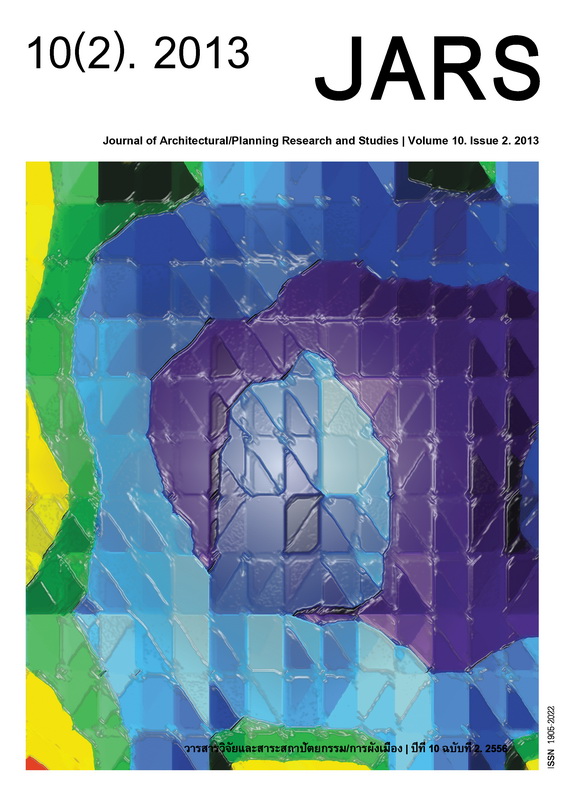Improvement of Louvers and Openings of Factory Building to Remove Heat through Natural Wind
Main Article Content
Abstract
Downloads
Article Details

This work is licensed under a Creative Commons Attribution-NonCommercial-NoDerivatives 4.0 International License.
All material is licensed under the terms of the Creative Commons Attribution 4.0 International (CC-BY-NC-ND 4.0) License, unless otherwise stated. As such, authors are free to share, copy, and redistribute the material in any medium or format. The authors must give appropriate credit, provide a link to the license, and indicate if changes were made. The authors may do so in any reasonable manner, but not in any way that suggests the licensor endorses you or your use. The authors may not use the material for commercial purposes. If the authors remix, transform, or build upon the material, they may not distribute the modified material, unless permission is obtained from JARS. Final, accepted versions of the paper may be posted on third party repositories, provided appropriate acknowledgement to the original source is clearly noted.
References
Bansal, N. K., Mathur, R. & Bhandari, M. S. (1993). Solar chimney for enhance stack ventilation. Building and Environment, 28, 373–7.
Chenvidyakarn, T. (2005). The Impact of pre-cooling on multiple steady states in stack ventilation. Journal of Architectural/Planning Research and Studies, 3, 3-20.
Chungloo, S. (2007). Experimental and numerical studies of solar chimney and wetted roof: an application in the hot and humid climate. PhD thesis. Sirindhorn International Institute of Technology, Thammasat University, Thailand.
Chungloo, S. & Tienchutima, C. (2012). The effect of wing-walls and balcony on wind induced ventilation in high-rise residential units. Journal of Architectural/Planning Research and Studies, 8(1), 109-120.
DeFraeye, T., Blocken, B. & Carmeliet, J. (2010). CFD analysis of convective heat transfer at the surfaces of cube immersed in a turbulent boundary layer. International Journal of Heat and Mass Transfer, 53, 297-308.
Gan, G. (2006). Simulation of buoyancy-induced flow in open cavities for natural ventilation. Energy and Buildings, 38, 410–20.
Hirunlabh, J., Wachirapuwadon, S., Pratinthong, N. & Khedari, J. (2001). New configurations of a roof solar collector maximizing natural ventilation. Building and Environment, 36, 383–91.
Michael, G. Malaragns. (1982). Wind in architectural and environmental design. New York: Van Nostrand Reinhold.
Royal Thai Government Gazette. (2008). ประกาศกระทรวงอุตสาหกรรม เรื่อง มาตรการคุ้มครองความปลอดภัยในการประกอบกิจการโรงงานที่เกี่ยวกับสภาวะแวดล้อมในการทำงาน พ.ศ. 2546 [Notification of Ministry of Industry, Subject: Measures of safety of the operator with respect to the environment in the workplace 2003]. Retrieved January 25, 2012, from http://www.siamsafety.com
Srivanit, M., & Hokao, K. (2012). Thermal infrared remote sensing for urban climate and environmental studies: An application for the city of Bangkok, Thailand. Journal of Architectural/Planning Research and Studies, 9(1) 83-100.
Thai Meteorological Department. (2003). อุณหภูมิกระเปาะแห้ง ความชื้นสัมพัทธ์ และความเร็วลมรายชั่วโมง ปี 2542 – 2551 [Hourly data of dry bulb temperature, relative humidity and wind velocity in 1999-2008]. Retrieved August 10, 2012, from http://www.diw.go.th
The American Society of Heating, Refrigerating and Air-conditioning Engineers [ASHRAE]. (2001). ASHRAE handbook-fundamentals (SI) 2001. Atlanta: Author.


